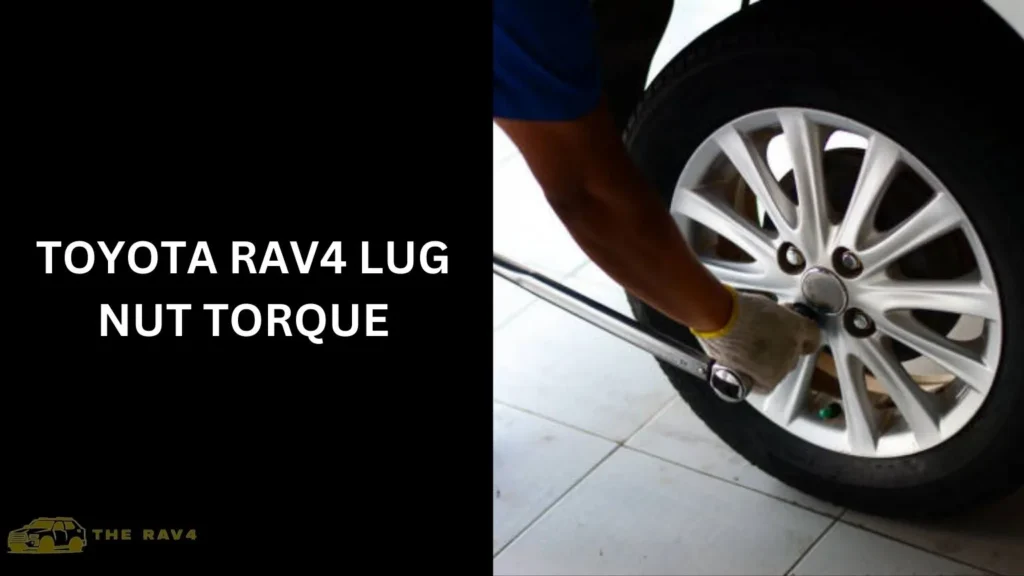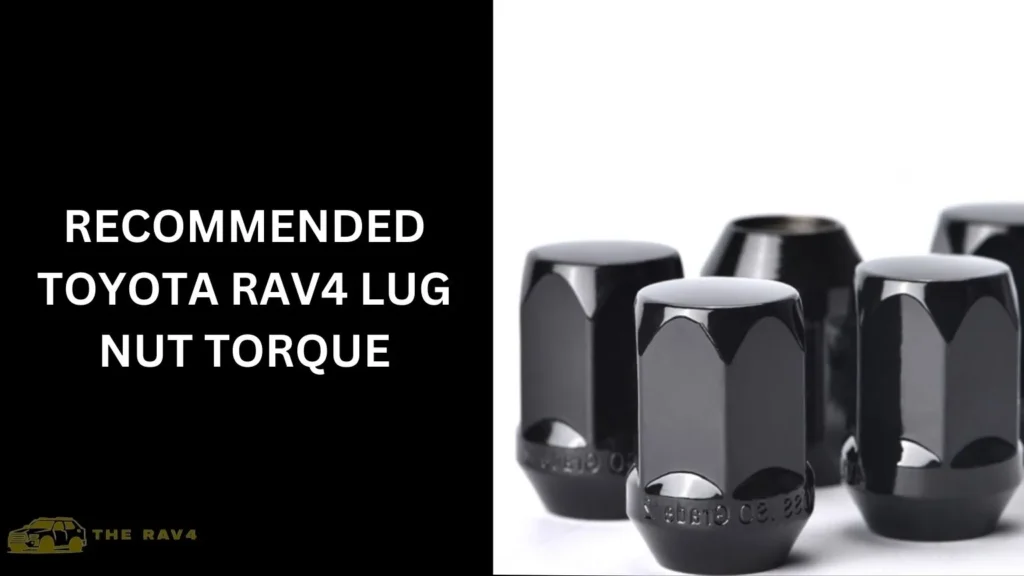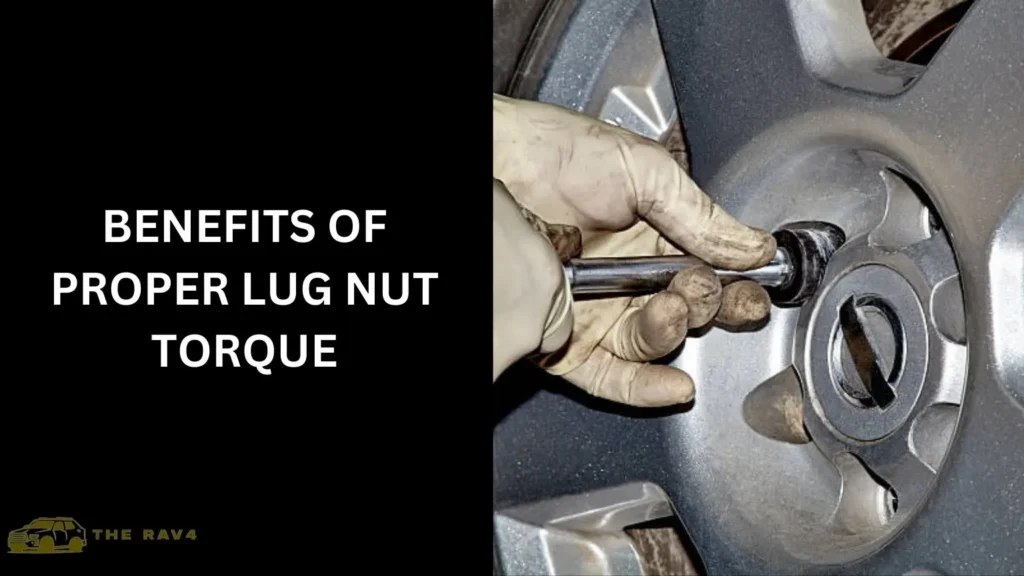When it comes to maintaining your Toyota RAV4, paying attention to even the smallest details like lug nut torque can make a significant difference in safety and performance.
In this article, we’ll delve into the importance of the correct Toyota Rav4 Lug Nut Torque, provide recommendations specifically for the Toyota RAV4, and discuss how to measure and ensure proper torque for your vehicle.

Understanding Lug Nut Torque
Lug nut torque refers to the amount of force applied to tighten the lug nuts that secure the wheels to the vehicle’s hub.
This torque is crucial as it ensures the wheels are properly attached, preventing accidents like wheel detachment while driving.
Importance of Correct Torque
Using the correct lug nut torque is essential for several reasons. Firstly, it maintains wheel integrity by preventing over-tightening, which can lead to damaged studs or stripped threads.
Secondly, it ensures even pressure distribution across the wheel, promoting balanced wear and extending tire life. Lastly, correct torque helps prevent lug nut loosening, reducing the risk of wheel detachment.
Recommended Toyota Rav4 Lug Nut Torque

For Toyota RAV4 vehicles, the recommended lug nut torque typically falls within the range of 80 to 100 foot-pounds (ft-lbs).
It’s crucial to consult your vehicle’s manual or contact a certified Toyota technician for the exact torque specifications based on your RAV4 model year.
How to Measure Lug Nut Torque?
Measuring lug nut torque requires specific tools, such as a torque wrench. This tool allows you to apply precise force when tightening the lug nuts.
To measure torque accurately, follow these steps:
Tools for Torque Measurement
- Torque Wrench: Choose a quality torque wrench with a range suitable for your vehicle’s lug nut torque specifications.
- Wheel Chocks: Use wheel chocks to prevent the vehicle from rolling while working on it.
Steps to Properly Torque Lug Nuts
- Loosen Lug Nuts: Before lifting the vehicle, loosen the lug nuts slightly using a wrench.
- Lift Vehicle: Use a jack to lift the vehicle, ensuring it’s stable and secure.
- Remove Wheels: Once lifted, remove the wheels completely.
- Apply Torque: Using the torque wrench set to the recommended torque, tighten the lug nuts in a star or crisscross pattern.
- Lower Vehicle: Carefully lower the vehicle back to the ground.
- Re-Torque: After driving a short distance, re-torque the lug nuts to ensure they remain properly tightened.
Benefits of Proper Lug Nut Torque

Ensuring proper lug nut torque offers numerous benefits, including:
- Enhanced safety by preventing wheel detachment.
- Improved handling and stability.
- Extended lifespan of wheels and tires.
- Reduced risk of costly repairs due to wheel-related issues.
Common Mistakes and Risks
When it comes to dealing with lug nut torque, there are several common mistakes and risks that vehicle owners should be aware of to ensure proper maintenance and safety.
Understanding these pitfalls can help prevent potential issues and keep your vehicle in optimal condition.
Here are some of the most common mistakes and risks associated with lug nut torque:
Over-Tightening
One of the most prevalent mistakes is over-tightening lug nuts. While it may seem like tighter is better, excessive torque can lead to damaged studs, warped brake rotors, or stripped threads.
Over-tightening can also make it challenging to remove the lug nuts during tire changes, resulting in frustrating and time-consuming maintenance tasks.
Under-Tightening
On the flip side, under-tightening lug nuts pose significant risks. If the lug nuts are not adequately tightened,
they can loosen over time, causing the wheel to wobble or even detach while driving. This scenario is hazardous and can lead to accidents, injuries, or damage to the vehicle.
Uneven Torque Distribution
Uneven torque distribution across the lug nuts is another common mistake. When tightening the nuts, following a star or crisscross pattern is crucial to ensure even pressure on the wheel.
Failing to distribute torque evenly can result in imbalanced wheel alignment, vibrations, and premature wear on tires.
Using Incorrect Tools
Using the wrong tools for torque measurement is a recipe for disaster. Using a torque wrench that is not calibrated or suitable for your vehicle’s specifications can lead to inaccurate torque readings.
It’s essential to use a quality torque wrench that matches your vehicle’s recommended torque range to achieve reliable results.
Skipping Torque Checks
Neglecting to check lug nut torque regularly is another risk factor. Over time, factors like driving conditions, temperature changes, and wheel maintenance can affect lug nut tightness.
It’s crucial to periodically check and re-torque lug nuts to ensure they remain properly tightened and secure.
Ignoring Manufacturer Recommendations
Every vehicle model has specific lug nut torque specifications provided by the manufacturer. Ignoring these recommendations and using arbitrary torque settings can lead to safety hazards and vehicle damage.
Always refer to your vehicle’s manual or consult a certified technician for accurate torque information.
People also ask
What torque should lug nuts be tightened to?
Lug nuts should be tightened to the manufacturer’s recommended torque specifications,
typically ranging from 80 to 100 foot pounds (ft-lbs) for most vehicles, including the Toyota RAV4.
What size are the lug nuts on a 2024 RAV4?
The lug nuts on a 2024 Toyota RAV4 are typically 21mm in size.
What is the correct torque for wheel nuts?
The correct torque for wheel nuts varies depending on the vehicle’s make and model.
For most cars, including the Toyota RAV4, the recommended torque for wheel nuts is typically between 80 to 100 foot-pounds (ft-lbs).
It’s crucial to consult your vehicle’s manual or a certified technician for the exact torque specifications.
How much torque does a lug nut need lbs?
A lug nut typically needs around 80 to 100 foot pounds (ft-lbs) of torque.
Conclusion
Proper lug nut torque is a crucial aspect of vehicle maintenance, especially for the Toyota RAV4.
By understanding the recommended torque, using the right tools, and following the correct procedures, you can enhance safety, prolong wheel and tire life, and enjoy optimal performance from your RAV4.